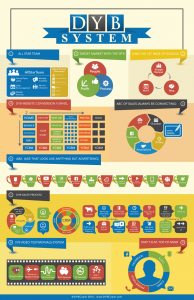
What Does It Cost You To Put A Guy On A Job For An Hour?
What’s your overhead?
What’s your average labor cost?
I’m going to share with you something that is widely overlooked when it comes to calculating overhead.
I am Ron Ramsden, and I am a DYB coach, also painting contractor here in Massachusetts.
We are going to walk through a small example of how to calculate a labor cost.
What is your labor burden to put someone on a job?
I know when I started out, I’d walk through and say, okay for every day we are going to be working somewhere it’s going to be X number of dollars.
But I’m going to honest with you, I didn’t know then what I know now, and I was just taking a stab at an hourly rate.
I thought if I was making twenty-five dollars an hour back then, that was a thousand bucks a week, I was doing okay, but that was 18 years ago.
In reality, I was probably making $6 per hour after expenses…
Let’s walk through an example.
I’m also going to give you a couple of ideas on how to reduce your overall labor burden on yourself and hopefully be able to save you some money down the road.
My example here is labor for a company with four employees.
One of them could be yourself, maybe you have a crew of four people, and you sit back and you eat bonbons all day.
Painter one is making $12 an hour, of course, it is different for every single company, I just took a bunch of numbers and put them up there.
Your second painter is $15 an hour.
Your third painter, he is pretty good, he is at $20 an hour.
Then your crew leader is $23 an hour.
If you just look at those quickly 12 + 15 + 20 + 23 = $70/hr.
These four guys in the back of your mind cost you $70an hour… right?
Wrong, wrong, WRONG!
If that’s what you’re thinking, watch this…
I want to just open your eyes to what it really costs you, and what your profit is on top of all that. I’m not going to tell you how much you should charge because that’s what you have to figure out.
There’s going to be differences in employment wages based on where you are, state taxes are different, so on and so on.
Take a look: $70/hr divided by 4 because you have four employees.
Your avg. hourly rate is $17.50/hr. Excellent!
So every guy on avg. costing you $17.50 an hour… right?
…wrong.
Let’s go over some more numbers.
Let’s figure out what it’s going to cost you in reality…
We’re going to figure out what it costs on a yearly basis as well as some ways to save you some money.
On average with four painters, working a 40-hour week, you have 160 hours a week.
We are going to say 50 weeks per year, two weeks they don’t work, you might even calculate it differently if you factor in snowy & rainy days.
They’re going to work 50 weeks at 160 hours per week.
That brings you to 8,000 working hours a year!
Now let’s just glance over here at some of the overhead costs like a van.
Our biggest one is labor.
It’s going to differ for every single company, but this is ours:
Our avg. labor is $17.50
One of the things that first popped into my head is my Workman’s Comp.
This bill is automatically deducted, I pay weekly and it shows up in my email.
Then we have taxes; this is where it’s going to differ for every single state.
I live in Massachusetts, our state tax is 0625.
Then, of course, we have federal, we also have unemployment which they call something else right now.
Then the other little taxes they throw in there, and you’re not supposed to figure out what they are…
Meanwhile, in between that, we have workman’s comp, and I’m going to tell you something about this.
I’m paying roughly 23% on top of my labor rate.
So take whatever labor rate you want, without any other overhead in here, it’s 23% higher just to make everybody else happy, unemployment and workman’s comp along with the other insurance.
Basically, if you are paying 10$ an hour in Massachusetts, at 23% in my case, it’s not $12.30, that’s some of the overhead that we don’t always think about, that’s the little overhead.
Now let’s start adding some of the other stuff up…
For some of you out there, this might not be it, but I want you to open up your mind to different overheads you can calculate on your own.
Office rent, trucks, cars, whatever you drive for a vehicle, maybe you have two or three of them out there.
We have internet, gas for cars, cell phones, and laptops.
You also have to think about things like laptops, and cell phones, they have to be replaced at some point.
Create a drip account to put some money aside for overhead down the road.
We also have different apps and software.
Have you purchased some software to do your estimating, do you use base camp?
We use Estimate Rocket.
All of those things cost money; maybe you have some extra storage out in the cloud somewhere that you pay five bucks a month or something along the lines.
Also, networking associations, you know them all, BNI, Rotary, Chamber, include your annual dues for those.
There’s also some networking that you’re going to be doing, and that’s going to cost money.
This includes your PDCA, you can get a lot of value in this.
Next, let’s talk about tools.
If you supply tools to your crew, that’s a cost you should factor in and break it down to a weekly allotment.
It might be cents; it might be a penny, two pennies, three pennies, five pennies a buck, whatever works for you.
Like I said insurances; we have liability insurance and car insurance.
As for myself, I have umbrella insurance on top of everything else.
Depending on if you have a shop or not, that’s electricity, gas, maybe a heatwave gas, you also have some kind of insurance for the shop.
For Massachusetts we have a state licensing, not for painters, painters aren’t licensed, but we have to call it as the home improvement contract license, which is $200-$300 a year, every other year or something of the sort.
The excise tax, those are on our vehicles, we have an additional burden on our cars every year.
We don’t always know what it’s going to be if it’s a new vehicle, such as your brand new pickup truck.
It’s about $500-$700 for the first year, and it drops accordingly all the way down to $37.50 for a 20-year old vehicle.
Do you buy your crew lunch?
Maybe you take someone else out for dinner, perhaps you meet with your accountant and buy them dinner.
You have your accounting, your yearly tax per painting, preparing, you also have your payroll costs, if you don’t do your payroll in-house, maybe you hire someone to do that.
Perhaps you travel for networking, maybe for DYB, perhaps you come to one of our get-togethers, maybe you go to the PDCA national.
Perhaps you go to a course in another state…
Another one is donations and charity.
Also, big equipment purchases. Did you buy a lift? Did you buy new sprayers?
Well, that is not a direct cut, that is something you must keep track of accounting-wise, we’re not going to go into how you break that down in the accounting world, but you still have to pay for it.
Break it down and put some money aside into a drip, into a separate account for those big purchases like we talked about before.
Maybe a significant investment for a tool or vehicle.
Then we have truck repairs, maybe you’re driving an older truck, then something breaks down, or they need new tires after a year or so.
Also like I said the drip, this drip is big for us, this drip is our business savings.
This drip is our retirement and things like that.
Do you give out vacation pay?
You have to allow that, that’s overhead for the business.
Also costs for shirts and signs.
Twice a year you purchase shirts and sweatshirts and possibly hats.
Do you buy your crew, your painter’s whites?
That’s all overhead; they are going to be broken down into a cost, you want to break it down to an hourly price over the course of the year.
We also have perks and bonuses.
Do you give out rewards?
What are your perks for your crew?
Like I said painters whites, maybe that’s a perk for your team, perhaps it’s a bonus.
Another perk could be buying them new tools, whatever it may be.
You’ve got to understand all of this adds up throughout the year.
What you want to do is break it down all the way to how many hours you’re going to work.
How do you reduce the overhead cost?
Numbers will vary depending on where you are.
For me, 23% on top of an hourly rate, add all of these things up and divide, some of these things are going to change if you have more people.
You add one more person, your state license isn’t going to change, so you’re reducing your labor cost.
Some of the other things, your donations might not change, your networking trip doesn’t change, some of your insurances won’t change.
Obviously, workman’s compensation will vary.
Also, your office rent is not going to change, your internet is not going to change, your cell phones are going to change.
By adding additional workers, increasing your workload, how much you can get done, you’re going to reduce your overhead cost per person.
If you have a bunch of very experienced workers, maybe you are more in the 20-23/hr a job.
So, you have four here, at $20, you have $80 an hour.
If you had three guys at $20, is $60 and then you had one at $12 because he’s a prep guy, you now have a burden of $72, for all four guys being on.
That’s a 10% savings right there in overall cost.
Those are some of the factors to keep in mind, it doesn’t matter if you’re a one-man or two-man show or a 50-person show!
Click here for more info about how to bid interior paint jobs.
Anyways, I’d love to help you in the future, if you want to contact me, many of you have, ron@dybcoach.com, send me an email!
Find me on Facebook; I’ll be more than happy to talk to you, or give me a call, send me a message.
I’m Ron Ramsden, and I am a DYB coach, also a painting contractor up here in Massachusetts. You can work in the bucket, you can work out of the bucket, I’m just helping everybody work on their business.
Have a great day!


